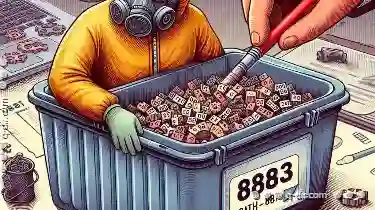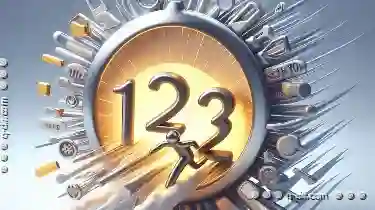When it comes to managing files and folders, one of the most common yet often misunderstood tasks is deleting them. In this blog post, we'll delve into a ...
 specific aspect of file deletion that can be particularly confusing: what happens when you delete a file that has custom attributes assigned to it in Windows or Unix-based systems like Linux? Let's break down the specifics and explore what stays behind after you attempt to remove such files.
specific aspect of file deletion that can be particularly confusing: what happens when you delete a file that has custom attributes assigned to it in Windows or Unix-based systems like Linux? Let's break down the specifics and explore what stays behind after you attempt to remove such files.1. Understanding Custom Attributes
2. Deleting Files in Windows
3. Deleting Files in Unix-Based Systems (Linux)
4. Conclusion
1.) Understanding Custom Attributes
First, let’s clarify what we mean by "custom attributes." In computing, an attribute is a piece of metadata that can be associated with a file or directory, providing additional information about its properties. These attributes are used for various purposes such as controlling access permissions (Unix), storing application-specific data (NTFS), or managing compression and encryption settings (both Unix and NTFS).
2.) Deleting Files in Windows
What Happens When You Delete a File with Custom Attributes?
In Windows, if you try to delete a file that has custom attributes assigned to it, the system will not allow the deletion unless those attributes are removed first. This is because these attributes can be associated with important metadata and permissions settings. If you attempt to delete such a file without removing its custom attributes, you'll encounter an error message like this:
"> "The file '<filename">' cannot be deleted because it is open or in use by another program."
This isn’t actually about the file being used by a program; rather, it indicates that Windows is preventing deletion due to the presence of custom attributes. To successfully delete such files, you must clear their custom attributes:
1. Open File Properties: Right-click on the file in Windows Explorer and select "Properties."
2. Go to the Details Tab: Click on the "Details" tab at the top.
3. Clear Custom Attributes: In the "Attributes" section, uncheck any boxes that indicate custom attributes (e.g., "System," "Hidden," etc.).
4. Now you should be able to delete the file without any issues.
What Stays Behind?
When you clear the custom attributes and successfully delete a file in Windows, it will physically remove the file from wherever it is stored (usually your hard drive or another storage device). However, there are some residual effects that might still be present:
- Shortcuts: If the deleted file was part of a shortcut chain (like a network drive or mapped drive), those shortcuts may remain as broken links until you manually update them.
- Recycle Bin: Even if you delete the file using standard deletion methods, it will usually end up in the Recycle Bin unless specifically configured otherwise (e.g., through the Shift key during deletion). You can recover files from the Recycle Bin at any time before they are permanently deleted.
3.) Deleting Files in Unix-Based Systems (Linux)
What Happens When You Delete a File with Custom Attributes?
In Unix-based systems like Linux, custom attributes assigned to files and directories are managed using extended attributes (xattrs). These can be set through various tools and utilities. If you try to delete such a file or directory without removing its xattrs, the operation will fail due to permissions issues:
rm: cannot remove 'file_with_xattr': Directory not empty
This error indicates that there are still references to the file (or possibly other metadata) holding it up from deletion. To resolve this, you need to clear or delete these xattrs:
1. List Xattrs: Use `getfattr` to list all extended attributes for a file:
getfattr -n user.your_xattr_name /path/to/file_with_xattr2. Remove Xattrs: You can then use `setfattr` to remove specific xattrs or clear them all (`-h` option clears inherited attributes):
setfattr -n user.your_xattr_name -v new_value /path/to/file_with_xattr setfattr -x user.your_xattr_name /path/to/file_with_xattr3. Now you can safely delete the file or directory.
What Stays Behind?
In Unix-based systems, when you remove xattrs and successfully delete a file, it is physically removed from wherever it resides:
- Shortcuts: As in Windows, any shortcuts that pointed to the deleted item will remain as broken links until updated or reconfigured.
- Recycle Bin: Similar to Windows, files are usually sent to the Recycle Bin unless explicitly configured otherwise (e.g., through a terminal command invoking `--no-preserve-root`).
4.) Conclusion
While deleting files with custom attributes may seem daunting at first, understanding how these attributes work and what remains after deletion can make the process much clearer. In both Windows and Unix-based systems, attempting to delete such files without proper removal of their attributes will result in an error. Once you understand and follow the steps for clearing or removing these attributes, you’ll be able to manage your file system more effectively.

The Autor: / 0 2025-03-23
Read also!
Page-

The Little-Known Shortcuts That Make the Address Bar Faster
One of the most underutilized features in many browsers is the address bar-that seemingly simple field where you type URLs and search queries. ...read more

File Attributes: The Hidden Metadata Controlling Your Digital Life
While we often focus on file names and locations, there’s a whole world of metadata waiting to be explored-a realm that could significantly enhance ...read more

Details View vs. Hybrid Layouts: Which is Better?
Among the various layout options available, **Details View** and **Hybrid Layouts** stand out as popular choices. This blog post will delve into the ...read more